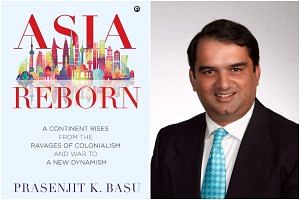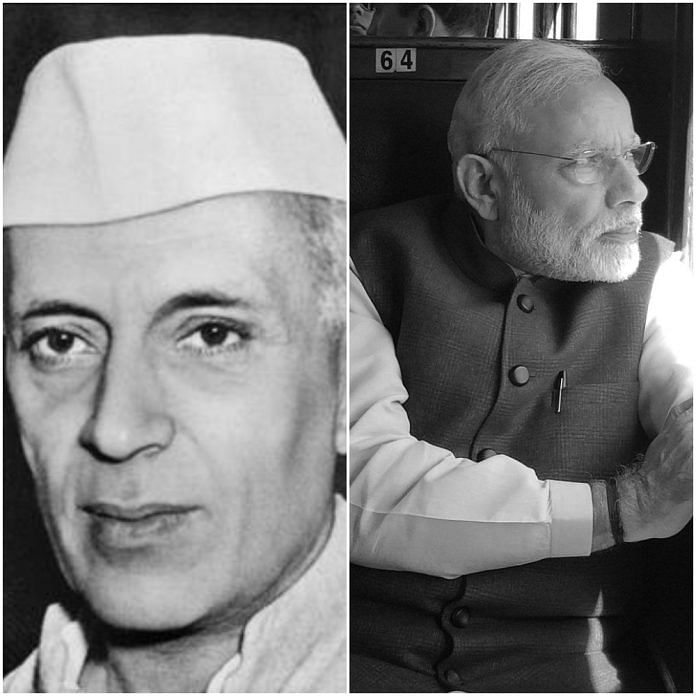It was easy for Nehru to be a “democrat” and institution-builder given every lever of the state was in his hands.
Nehru controlled the presidency, both Houses of Parliament and every state government throughout his 17 years in power — with the brief exception of Kerala. It is easy to be a “democrat” and institution-builder when every lever of the state is in your hands.
Today’s India is a democracy with robust checks and balances, enforced by a judiciary far more empowered than in Nehru’s day. Our Supreme Court’s judgements on privacy, triple talaq and Diwali crackers would have been unthinkable in 1950s India or today’s China (leave alone in Mao’s China during the Cultural Revolution or the Great Leap Forward). And numerous opposition state governments and the Rajya Sabha act as further checks on Modi.
When faced with an elected opposition government for the first time in 1957 (Kerala led by the redoubtable EMS Namboodiripad), Nehru failed the democracy test. Within two years, he instead misused the colonial-era device of a governor acting at the Centre’s behest to dismiss an elected state government. That his daughter Indira was Congress president at the time added a dose of dynastic nepotism to the mix, but the buck stopped with Nehru (not Indira) in 1959.
Even his esteemed colleague, Maulana Azad (who had been Congress president from 1940 to 1946) had to reserve his criticism to an edition of his book that could only be opened 30 years after his death. Contrast that with Raghu Rajan’s potshots at the government of the day last month, and the RBI’s attempt to statistically demolish the demonetisation narrative at the end of August.
 Azad’s delayed critiques are still worth recalling: he accused Nehru of failing the test of secularism in 1937 when he overlooked Syed Mahmud (a Muslim) and Khurshed Nariman (a Parsi) as the natural candidates for the premiership of Bihar and Bombay respectively. By picking upper-caste Hindus instead, Azad alleged that Nehru had provided just the opening for the electorally-humiliated Jinnah to mount a spirited attack on Congress.
Azad’s delayed critiques are still worth recalling: he accused Nehru of failing the test of secularism in 1937 when he overlooked Syed Mahmud (a Muslim) and Khurshed Nariman (a Parsi) as the natural candidates for the premiership of Bihar and Bombay respectively. By picking upper-caste Hindus instead, Azad alleged that Nehru had provided just the opening for the electorally-humiliated Jinnah to mount a spirited attack on Congress.
And despite his avowed atheism, Nehru built his political brand on the moniker of “Panditji”, explicitly calling attention to his high-caste status. He was always “Pandit Jawaharlal” in the vernacular press – while remaining impeccably rational and “secular” in the English-language press.
But even Nehru’s relatively dictatorial powers were far from unfettered in the way that Mao’s and Stalin’s were. Their unfettered dictatorship enabled them to perpetrate pogroms such as the decimation of the “kulaks” in the 1930s and the Great Famine that followed in the wake of Mao’s quixotic Great Leap Forward — each killing tens of millions of people.
Nothing of the sort can ever happen in India. Indira during the Emergency did suspend the restraining influence of the judiciary and parliamentary opposition, but even she eventually called an election to bolster her legitimacy.
Indira’s was not an unfettered dictatorship, since the Statesman, The Indian Express and Kuldip Nayar didn’t lose their critical voices during the Emergency. But that controlled experiment in autocracy did deliver East Asian style economic outcomes.
Morarji Desai delivered even better economic outcomes in the next two years of democracy, averaging 6.5% annual GDP growth (the fastest 2-year growth before 1980) with modest deregulation combined with a dose of swadeshi a la George Fernandes. George’s expulsion of Coca-Cola and IBM helped spawn the world’s best cola (Thums Up) and the software behemoths of TCS and HCL.
If anything, dictatorship (albeit somewhat fettered dictatorship by comparison with Mao) enables Xi Jinping to indulge his hubristic fancies, especially on China’s imperial claims in the South China Sea and the Himalayas.
Democratic India has called Xi’s bluff on Doklam, just as Vietnam called Deng’s bluff in March 1979. Despite having more dictatorial power, Jawaharlal tried to avert his eyes when confronted with the PLA having built a road through the vast Aksai Chin area of India’s territory in Ladakh.
Ironically, China’s territorial gains at India’s expense in the 1950s (Tibet first, then Aksai Chin) occurred mainly because Jawaharlal was abridging the flow of information. In a more democratic era, Modi has responded robustly in Doklam and PoK (last year). Effective strategic leadership is always the best response, especially when democracies are confronted by aggressive autocracies.
The author is an adjunct professor of Economics and Global Affairs at the SP Jain School of Global Management.




useless and motivated article and without any fact just twisting of fact or perhaps auther dont know any thing about democracy or Indian politics and social structure whether in 1950s or 2010s
Modiji is PM of developed India .Nehru was PM of divided poor India for 17years.
One must presume the author is working towards building up a larger than life ‘democrat’ in Modi. Seems very well-timed considering that it comes in the wake of the PM’s pronouncements on Intra-party democracy. The beginnings of the use of ‘Pandit’ by Jawaharlal Nehru is now being given a new twist, one cannot tell yet if it was his attempt to adopt the upper crust angle to his persona. As for using the Raghuram Rajan criticism of the demonetisation to show the present PM as a better democrat is stretching things too far. Such comments have come from earlier RBI governors, but then we did not live in such troubled times. To think that the PM has had the final say on the Doklam issue vis-a-vis our neighbour comes out of inability to look back on how the Chinese have engineered their foreign policy and understand how China operates. Last but not the least every arm of govt must evolve over the years, and the same has happened to our judiciary. The SC’s verdict may be a Great Leap Forward, but how much of it gets translated in the final reckoning matters. This is yet another analysis aimed at elevating Modi before the average Indian. Basically, let common sense prevail. Let not attempt to displace leaders of repute within a term of PM ship be the end in itself of Modi and those who believe that he is the Messiah India is waiting for.
The narrative is biased and selective … It mainly draws on Nehru’s failures as vestiges of his autocracy which is incorrect. He forgets to mention the very checks and balances he mentions as the pillars of today’s democracy was largely created by Ambedkar and nurtured by Nehru. He forgets to mention people like S P Mukherjee J B Kriplani R M Lohia and Rajaji who criticized him in less forgiving ways than Rajan (they were not retaliated against politically) Nehru wanted to resign at least thrice from the premiership but was not allowed by Congress. It is simply fallacious to even compare an openly communal sword wielding demagogue with “Panditji” whatever his faults were. In fact it has been said to even compare Nepolaon with Hitler is greatest insult to the former and the best compliment to the latter … The case of Nehru and Modi is similar